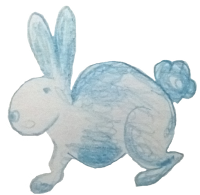What are we can do with flat shapes (triangles, rectangles, octagons, circles, ellipses, …)? Do you like to draw? Note: liking is different from knowing.
How do you begin a drawing?
The sketch for a drawing is as the metal beams that support a house, at the end of the build, we do not see them, but try to build this without it is only for the geniuses.
So how do we start drawing a sketch? Those who practice can start anywhere, but for those who don’t, it is easier to start by drawing simple shapes and combining them. But in order not to refer to them only as “this”, “that one”, “that a little tight” … we can use the names of these shapes (this is more cute and makes us think, why not? if already we learn them in school).
Just to exemplify, we can compose an image from several simple flat shapes. Then, more shapes we use, implies more detail our image will have. The final step, after adjusting all the contours, is to carefully remove the outline textures (erase the flat shapes) and preserve the general idea of the image.
In the video below, who can identify a tridecagon? A decagon? How many heptagons we have? Notice how much more complicated it would be to refer to the shapes by other characteristics?
Detail, in the case of this video, many of the flat shapes are non-convex. A simple definition for understanding what do a shape be non-convex is to imagine this: there are at least two points inside the shape that we can draw a straight line between them and the line passes out of shape.
Similarly to the convex shapes: to any two points inside the shape, we can draw a line between them that not pass out of shape.
Example, a triangle is convex but a 5-pointed star is not-convex.
